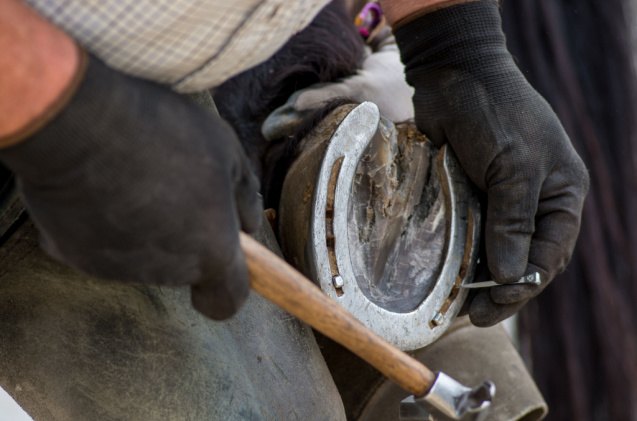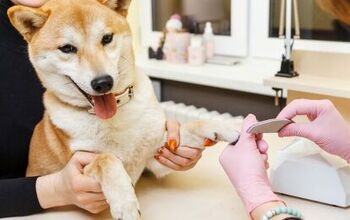Shoeing Horses: Pros and Cons

A horse lover or not, you probably saw horseshoes hundreds of times in your life. A common symbol of good luck, the horseshoe has actual practical use in the world of equines. These implements have been around for many centuries, their design seemingly unchanged. And they are there to enhance your horse’s hooves, giving the animal more grip on common surfaces. Most experts agree that they are there to benefit the health of your horse’s hooves, but the question still arises: are they really necessary today? Some controversy arose over this question, which leads us to re-evaluate the importance of shoeing horses, and all its pros and cons.
A horseshoe, as we all know, is iron, steel, or aluminum U-shaped implement that is designed to both protect and enhance a horse's hoof. A horse whose hooves have horseshoes is known as a “shod” horse. These implements have been around for ages and were designed in order to allow domesticated horses to perform all sorts of tasks in various terrains. Today, of course, shoding is an owner’s preference. If you own a workhorse who needs to perform tasks, you might prefer it to be shod, but if you have a pasture horse who’s just enjoying life, horseshoes might not be necessary.
For the most part, the hoof is like a giant toenail. The horseshoes are attached most commonly with special nails, but this does not hurt the horse. Most say that the filling is like clipping your own nails with a nail clipper. There are various uses for horseshoes, all dictated by the modern environments and new uses found for a horse. They originated in our early history when horses were commonly used in battle and heavy tasks. The horseshoes today help in many ways, generally keeping the hoof protected and preventing quick wearing down.
Right from the get-go, we can notice some of the most important pros of horseshoes. Foremostly, they improve a horse’s balance. While performing certain tasks, on different grounds, a horse can require extra balance, especially if their hoofs are not evenly trimmed. Then, there is the all-important added traction. Horses can require some extra stability on smooth and uneven surfaces, especially on concrete and asphalt. Wet grass and muddy ground can be especially difficult as well. And, if your horse is working in such conditions, it can slip and be unable to move. Horseshoes are invaluable in these conditions, thanks to the grip and traction they add. Of course, we can’t overlook the protection that horseshoes bring. Working in different environments, your horse can step on all sorts of nasty stuff, from sharp rocks to nails and who knows what else. With an appropriate horseshoe, the hoof can be better protected against these things.
Of course, not all owners are supporters of horseshoes. Then again, if your horse is not working on special tasks, there might not be a need for one. After all, regular trimming of hooves can be enough in such cases. But there are also some cons of shoeing horses that owners dislike. They can lead to injuries, in some cases. If the farrier – the name for the person shoeing the horse – lacks experience, a nail can miss its target and hurt the sensitive inner part of the hoof, injuring the horse. Furthermore, if a shoe falls off during hard work tasks, the horse can get injured, for example, spraining its ankle. Another con is the simple fact that shoeing can be expensive for some owners, especially if you own several horses and require frequent shoeing. Remember that this is a special craft that requires skill and precision, and adequate equipment, which in turn drives the price up.
In the end, it all goes down to the personal preference of the horse’s owner. Some prefer that their horses go “barefoot”, especially if they are pastured or perform within an arena. Some owners argue that the horse is more stable without horseshoes. But then again, this too has its cons, as there will be frequent hoof trimmings (also expensive), and more risk of injuries on the unprotected hoof. It’s clear that it’s all about simple personal preference – you alone know what is best for your horse in the given circumstances, and the environments the animal works in. Horses doing hard work and special tasks might require shoeing, but a horse with a leisurely life on a pasture will have no need for it.

A proud mama to seven dogs and ten cats, Angela spends her days writing for her fellow pet parents and pampering her furballs, all of whom are rescues. When she's not gushing over her adorable cats or playing with her dogs, she can be found curled up with a good fantasy book.
More by Angela Vuckovic























